It is a captivating phenomenon that has long fascinated scientists and stargazers alike — the mesmerizing dance of the planets in perfect alignment. Planetary alignment, a captivating celestial event, occurs when two or more planets come together in a straight line in relation to the Earth. This alignment, influenced by the forces of gravity, holds a significant place in both the realm of science and the world of astrology. In this article, we will delve into the intriguing science behind planetary alignment, exploring its definition, causes, and implications. Join us on this cosmic journey as we unravel the mysteries of the planets aligning in the vast expanse of our universe.
Contents
- What is Planetary Alignment?
- The Role of Gravity in Planetary Alignment
- Implications of Planetary Alignment
- Planetary Alignment and Astrology
- Observing and Studying Planetary Alignment
- Conclusion
-
Frequently Asked Questions
- What are the different types of planetary alignments?
- What causes planetary alignment?
- Do all the planets in our solar system align at the same time?
- Can planetary alignment have any impact on Earth?
- Is there a connection between planetary alignment and astrology?
- How can I observe planetary alignment?
- Can planetary alignment affect the tides?
- Are there any notable historic planetary alignments?
- Can planetary alignment impact celestial events?
- Is there a correlation between planetary alignment and the seasons?
- References
-
Frequently Asked Questions
- How often does planetary alignment occur?
- Can planetary alignment cause natural disasters on Earth?
- How does planetary alignment affect astrology predictions?
- What are the most notable historic planetary alignments?
- What tools and techniques are used to observe and study planetary alignment?
- Can planetary alignment affect human emotions?
- Do all planets in the solar system align in a single line during planetary alignment?
- Is there a specific time of the year when planetary alignment is more likely to occur?
- Can planetary alignment affect the Earth’s climate?
- Are there any potential effects on other planets during planetary alignment?
- References
- Read More
What is Planetary Alignment?
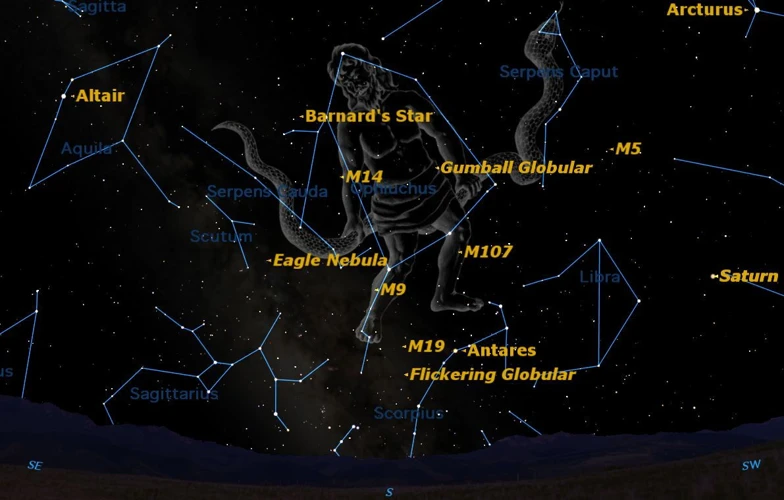
Planetary alignment refers to the rare occurrence when two or more planets align in a linear configuration with respect to Earth. This celestial phenomenon has captivated astronomers and skywatchers for centuries. When planets align, they appear to form a straight line across the sky. However, it is important to note that this alignment is a result of our perspective from Earth rather than the actual physical alignment of the planets in space. The concept of planetary alignment is significant in both the realms of science and astrology. In science, it offers insights into celestial mechanics and the gravitational forces that govern planetary motion. In astrology, planetary alignment holds astrological significance, with practitioners interpreting the alignment’s influence on personality traits and life events. Understanding the intricacies of planetary alignment requires delving into the causes, implications, and scientific evaluations of this fascinating cosmic phenomenon. Let’s explore further.
Definition and Explanation
Planetary alignment, as the name suggests, refers to the alignment of planets in the solar system. It occurs when two or more planets appear to align in a straight line, as observed from Earth. However, it is important to note that this alignment is relative to our viewpoint and does not imply that the planets are physically in a straight line in space. The distance between the planets remains vast, but their positions in the sky create the illusion of alignment. Planetary alignment can involve any combination of planets in our solar system, with the most common alignments involving the inner planets (Mercury, Venus, Earth, and Mars) or the outer planets (Jupiter, Saturn, Uranus, and Neptune). These alignments can occur in various configurations, such as a conjunction (when planets appear close together), opposition (when planets are on opposite sides of the sky), or even a grand conjunction (a rare alignment of multiple planets). The frequency of planetary alignments depends on the orbital periods and distances of the planets, resulting in varying occurrences throughout history. Understanding the definition and explanation of planetary alignment sets the groundwork for exploring its causes, implications, and scientific evaluations.
Types of Planetary Alignments
There are various types of planetary alignments that can occur in the vast expanse of our solar system. Each alignment holds its own unique characteristics and patterns. Here are some of the notable types of planetary alignments:
1. Conjunction: A conjunction alignment occurs when two or more planets align closely together in the same zodiac sign or within a few degrees of each other. It creates an intense energy and can signify powerful changes or new beginnings in astrology.
2. Opposition: An opposition alignment happens when two planets are positioned opposite each other in the sky, with Earth in the middle. This alignment creates tension and polarity between the planets involved. It often signifies a time of confrontation, conflict, or a need to find balance.
3. Trine: A trine alignment occurs when two planets are approximately 120 degrees apart, creating a harmonious angle. This alignment signifies ease, flow, and positive energy between the planets. It is often associated with opportunities and favorable circumstances.
4. Square: A square alignment happens when two planets form a 90-degree angle, creating a challenging dynamic. This alignment can bring about tension, obstacles, and internal conflicts. It often represents a period of growth and learning through challenges.
5. Grand Cross: A grand cross alignment is a complex configuration that occurs when four planets form a square pattern in the sky. This alignment creates a powerful energy of tension and transformation. It often signifies significant turning points or life-changing situations.
Understanding the different types of planetary alignments allows astronomers and astrologers to study the unique cosmic interactions and patterns that shape our celestial experiences. Whether exploring the alignment’s impact on personal horoscopes or investigating its gravitational effects on planetary motion, each type of alignment offers valuable insights into the mysteries of our universe.
Causes of Planetary Alignment
There are several factors that contribute to planetary alignment. One of the primary causes is the gravitational pull between celestial bodies. The gravitational force exerted by the Sun and the planets themselves plays a significant role in influencing their positions in space. As each planet orbits the Sun, their gravitational interactions with one another can lead to temporary alignments. Additionally, the tilt of a planet’s axis and its elliptical orbit can also contribute to the occurrence of planetary alignment.
Another factor that affects planetary alignment is the timing of each planet’s orbit. Since the durations of their revolutions around the Sun vary, the planets occasionally catch up to one another, resulting in an alignment. The concept of resonance comes into play, where the gravitational influence of one planet on another allows for their orbits to synchronize, leading to alignment at specific intervals.
It is important to note that planetary alignment is a relatively rare occurrence due to the complexity and variety of orbital paths followed by different planets. The unique combination of gravitational forces, timing, and orbital characteristics must align precisely for this phenomenon to take place. The causes of planetary alignment continue to be studied and researched by astronomers and astrophysicists to further our understanding of the intricate dynamics of the solar system.
The Role of Gravity in Planetary Alignment
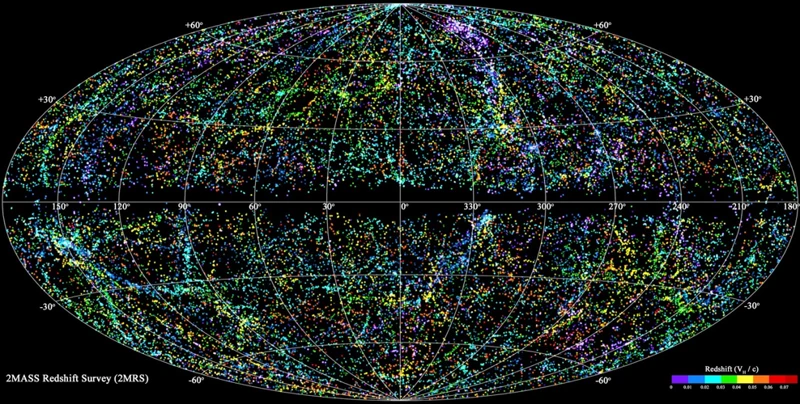
The Role of Gravity in planetary alignment is paramount. Gravity, as described by Newton’s Law of Universal Gravitation, is the force that governs the motion of celestial bodies. According to this law, every object with mass attracts other objects with a force that is directly proportional to their masses and inversely proportional to the square of the distance between them. In the context of planetary alignment, the gravitational force exerted by the planets plays a crucial role. The gravitational attraction between the planets and the Sun, as well as between the planets themselves, influences their orbits and positions in space. As the planets move along their elliptical paths around the Sun, their gravitational interactions can cause them to come into alignment from our perspective on Earth. It’s important to note that while gravity is a prominent factor in planetary alignment, other factors such as the orbits, masses, and distances of the planets also contribute to the overall configuration. The intricate dance of gravity and celestial motion creates the awe-inspiring phenomenon of planetary alignment that captivates astronomers and enthusiasts alike. To delve deeper into the gravitational forces at play, let’s explore how gravity affects planetary positions in our solar system.
Newton’s Law of Universal Gravitation
Newton’s Law of Universal Gravitation is a fundamental principle in physics that explains the force of gravity between objects. Proposed by Sir Isaac Newton in 1687, this law states that every particle of matter in the universe attracts every other particle with a force that is directly proportional to the product of their masses and inversely proportional to the square of the distance between their centers. Mathematically, this can be expressed as:
F = G * (m1 * m2) / r^2
Where:
– F represents the gravitational force between two objects.
– G is the gravitational constant, a fundamental constant in physics.
– m1 and m2 represent the masses of the two objects.
– r is the distance between the centers of the two objects.
This law plays a crucial role in understanding the mechanics of planetary alignment. The gravitational force exerted by each planet influences the motion and positioning of other celestial bodies. When planets align, their gravitational interactions are at play, affecting the overall configuration of the alignment. Newton’s Law of Universal Gravitation is essential in calculating and predicting the gravitational forces that drive planetary motion and alignment. It provides a mathematical foundation for explaining the intricate dance of the planets in the cosmos. To delve deeper into the relationship between planetary alignment and astrology, check out our article on the significance of the Ascendant in the natal chart.
How Gravity Affects Planetary Positions
Gravity plays a crucial role in determining the positions of planets during a planetary alignment. According to Newton’s Law of Universal Gravitation, every object in the universe attracts every other object with a force that is directly proportional to the product of their masses and inversely proportional to the square of the distance between them. In the case of planets, their masses and the distances between them are responsible for the gravitational forces they exert on each other. As a result, planets are constantly subjected to gravitational pulls from nearby celestial bodies, which can influence their orbits and positions. This gravitational interaction between planets, combined with their own inertia, causes them to move in elliptical paths around the Sun. When multiple planets align, it is the combined effect of these gravitational forces that brings them into a relatively straight line as observed from Earth. By understanding the intricate interplay of gravity and celestial bodies, scientists can predict and explain the mesmerizing planetary alignments that occur in our universe. To further explore the gravitational forces that shape our solar system, you may be interested in unraveling the origins of asteroid families or investigating interpretations of the constellation Leo.
Implications of Planetary Alignment
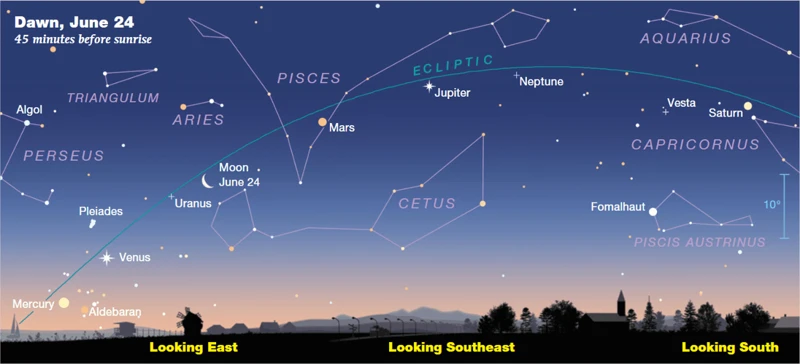
Planetary alignment showcases a myriad of implications that go beyond its visual appeal. This cosmic event has significant effects on various aspects of the universe. One of the most notable implications of planetary alignment is its contribution to astronomical events and phenomena. During alignment, planets may come into close proximity with each other, creating stunning conjunctions and apparent celestial gatherings. These events provide astronomers with unique opportunities to study planetary atmospheres, gravitational interactions, and even discover new moons or rings. Planetary alignment plays a crucial role in influencing tidal patterns on Earth. The combined gravitational forces of aligned planets contribute to the gravitational pull on our oceans, resulting in more extreme tides. This phenomenon can impact coastal ecosystems, navigation, and even the coastline itself. Additionally, planetary alignment affects the seasons. When certain planets align, they can influence the distribution of sunlight on Earth, which in turn impacts the timing and intensity of seasons. These variations in seasons have implications for agriculture, wildlife behavior, and overall climate patterns. Apart from Earth, planetary alignment also poses potential effects on other planets in our solar system. The gravitational pulls from aligned planets can perturb the orbits of other celestial bodies, leading to changes in their paths and timings. These interactions provide scientists with valuable insights into the dynamics of the solar system and its long-term stability. By unraveling and understanding the implications of planetary alignment, scientists and astronomers can gain a deeper understanding of the universe and its intricate workings.
Astronomical Events and Phenomena
Astronomical events and phenomena associated with planetary alignment offer breathtaking sights in the night sky and provide astronomers with unique research opportunities. One of the notable astronomical events resulting from planetary alignment is the formation of a planetary conjunction. A conjunction occurs when two or more planets appear to converge closely in the sky, creating a visually striking celestial display. These conjunctions can be visible to the naked eye or require the use of telescopes for a closer observation. Another fascinating event is the alignment of planets with other celestial objects, such as stars or the Moon, creating captivating alignments or occultations. Additionally, during planetary alignments, the phenomenon of opposition occurs, where a planet is opposite the Sun in Earth’s sky, resulting in its maximum visibility. These events not only provide a visual spectacle but also contribute to scientific understanding by allowing astronomers to study the interactions between planets and other celestial bodies. The exploration and documentation of these astronomical events add to our knowledge of the vast universe and the dynamic relationships between celestial objects.
Impact on Tides and Seasons
The alignment of planets can have a noticeable impact on tides and seasons here on Earth. The gravitational force exerted by the planets, particularly the larger ones like Jupiter and Saturn, influences the tides in our oceans. When these planets align with the Sun and Moon, their combined gravitational pull can result in higher or lower tides, known as spring tides and neap tides, respectively. Spring tides occur when the gravitational forces of the Sun and Moon align with the gravitational forces of the planets, causing an increase in tidal range. Neap tides, on the other hand, happen when the gravitational forces of the Sun and Moon are at right angles to the gravitational forces of the planets, resulting in a decrease in tidal range. Additionally, the alignment of planets can also play a role in the changing of seasons. The tilt of Earth’s axis, combined with the gravitational influences of the planets, affects the distribution of sunlight on our planet, leading to the different seasons we experience throughout the year. The alignment of planets can alter the balance of gravitational forces on Earth, impacting the timing and intensity of seasons. Studying the correlation between planetary alignment and tides/seasons provides valuable insights into the intricate workings of our solar system and its influence on Earth’s natural phenomena.
Potential Effects on Earth and Other Planets
The potential effects of planetary alignment on Earth and other planets are subjects of great interest and speculation. While it is important to note that the gravitational forces exerted by aligned planets are relatively weak, they still have some impact on celestial bodies.
1. Gravitational Effects: Planetary alignment can lead to a slight gravitational tug between the aligned planets. Though the gravitational forces are relatively weak, they can cause subtle changes in the orbits of the planets involved. This has the potential to disrupt their regular motions and alter their positions in the solar system.
2. Orbital Resonance: When planets align, their gravitational interactions can create a phenomenon called orbital resonance. This occurs when the orbital periods of the aligned planets have a simple numerical relationship, such as a ratio of 2:1 or 3:2. Orbital resonance can affect the stability of planetary systems and even lead to changes in the orbits of the planets involved.
3. Interplanetary Dust and Debris: Planetary alignment can also influence the distribution of interplanetary dust and debris. As planets align, their gravitational pull can attract nearby debris and cause it to accumulate in certain regions of space. This accumulation can potentially lead to an increased risk of meteor showers or asteroid impacts on Earth and other planets.
4. Magnetic Field Interactions: An alignment of planets can also have an effect on the magnetic fields of those planets. The interaction between magnetic fields can cause disturbances and fluctuations in the magnetospheres of the aligned planets. This can impact the aurora borealis and aurora australis phenomena, creating more intense and widespread displays of these beautiful natural lights.
It is important to note that while these effects are intriguing, they are generally minimal and unlikely to have a significant impact on Earth or other planets. Planetary alignment is a natural occurrence in the vastness of the universe, and its effects are primarily confined to the realms of gravitational forces and celestial mechanics. Understanding and studying these potential effects can provide valuable insights into the intricate dynamics of our solar system and beyond.
Planetary Alignment and Astrology
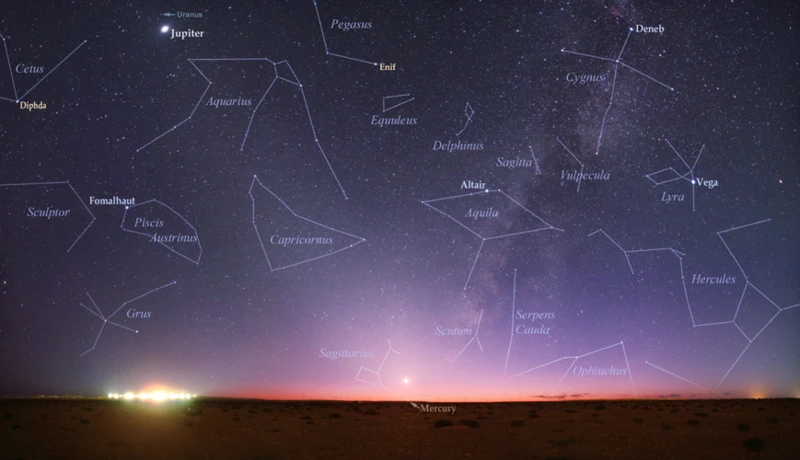
Astrology has long held a connection with planetary alignment, viewing the alignment of planets as a celestial event that influences human life and behavior. The belief is rooted in the notion that the positions of celestial bodies at the time of a person’s birth, as well as during significant life events, can have a profound impact on their personality, relationships, and destiny. Planetary alignments are seen as powerful cosmic influences that shape individual traits and experiences.
Throughout history, astrologers have attributed specific meanings to different planetary alignments. For example, when Saturn and Jupiter align, it is often seen as a moment of great significance, symbolizing a shift in societal structures or the beginning of a new era. Similarly, the alignment of Venus and Mars is associated with passionate love affairs and intense romantic connections.
However, it’s important to note that there is a divide between astrology and mainstream science. While astrology relies on symbolism and interpretation, scientific evaluations have not found empirical evidence to support the direct influence of planetary alignments on human affairs.
Critics argue that the alignment of planets has very little effect on individuals compared to other factors such as genetics, upbringing, and personal choices. Despite the skepticism from the scientific community, astrology continues to thrive, proving to be a source of comfort, guidance, and self-reflection for many.
Ultimately, the connection between planetary alignment and astrology remains a topic of debate. For those who believe in the influence of celestial bodies, planetary alignment serves as an important factor in interpreting and understanding astrological charts and predictions. For others, it is an intriguing concept that adds to the mystique and wonder of the universe. Whether one embraces astrology or views it with skepticism, the fascination with planetary alignment and its connection to astrology is an enduring aspect of human curiosity and wonder.
Historical Connections
Historical connections between planetary alignment and astrology date back to ancient civilizations such as the Babylonians, Egyptians, and Greeks. These cultures observed the movements of celestial bodies and believed that the alignment of planets had a profound influence on earthly affairs. The Babylonians, for example, developed an astrological system known as astrology (link to /astrology)that linked planetary alignments to the destiny of individuals and nations. Egyptians associated specific planets with their deities and linked their movements to events on Earth. The Greeks also contributed to the study of planetary alignment, with influential figures like Ptolemy exploring the connections between planetary positions and human affairs.
During the Renaissance, astrology experienced a resurgence in popularity, and planetary alignment played a central role in astrological interpretations. Astrologers believed that when certain planets aligned, they exerted a greater influence on human lives and events. For instance, the “Great Conjunction” of Jupiter and Saturn, which occurs approximately every 20 years, was considered particularly significant. It was often seen as a harbinger of major societal and political changes.
While astrology has continued to evolve, modern scientific exploration and advancements have cast doubt on the direct correlation between planetary alignment and astrological predictions. Skeptics argue that the influence of planetary positioning on human life is largely speculative and lacks empirical evidence. Nonetheless, historical connections between planetary alignment and astrology have left a lasting impact on our understanding of celestial phenomena and their perceived effects on our lives.
Scientific Evaluation
Scientific evaluation plays a crucial role in understanding the concept of planetary alignment and its significance. While astrology assigns meaning and interpretations to planetary alignments, the scientific community approaches the subject from a different perspective. Scientists view planetary alignment as a fascinating astronomical event with no direct impact on human life or events. They emphasize that the alignment of planets does not result in any gravitational or physical changes on Earth. Rather, it is a visual phenomenon caused by the relative positions and movements of planets in our Solar System. Scientists use advanced astronomical calculations and observations to accurately predict and record planetary alignments. By studying these alignments, scientists gain valuable insights into the mechanics of our solar system, planetary motion, and gravitational forces. Through scientific evaluation, researchers can better understand the dynamics of celestial bodies and their interactions. While planetary alignment may not have the mystical influences ascribed to it by astrology, its scientific evaluation helps further our knowledge of the universe and the laws that govern it.
Observing and Studying Planetary Alignment
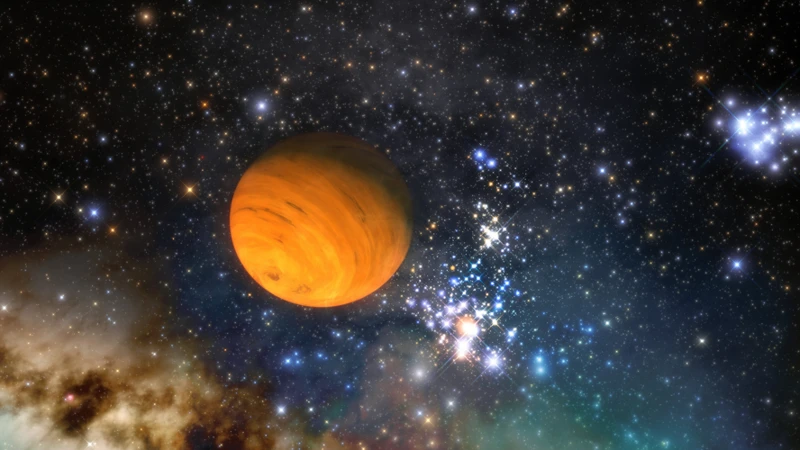
Observing and studying planetary alignment is a thrilling endeavor that allows scientists and astronomers to unlock the mysteries of our vast universe. To accurately observe and study planetary alignment, various tools and techniques are employed. Telescopes play a crucial role in observing the positions and movements of planets. Advanced telescopes equipped with high-resolution imaging capabilities provide detailed views of the alignment. Additionally, computer software and astronomical databases aid in tracking the positions of planets and predicting future alignments.
One notable tool used for studying planetary alignment is the CCD camera, which captures high-quality images of celestial bodies. These images allow scientists to precisely measure the positions of the planets during an alignment. Spectroscopic analysis, another technique employed by astronomers, enables the study of the composition and behavior of celestial objects during an alignment.
Studying historical alignments offers valuable insights into the patterns and occurrence of planetary alignment over time. Notable historic alignments, such as the rare alignment of Mars, Jupiter, and Saturn in 2000, provide a wealth of data for analysis and comparison. By examining these events, scientists can better understand the causes and frequency of planetary alignment.
While observing and studying planetary alignment, it is important to separate scientific investigation from astrological interpretations. Scientific research focuses on the physical aspects and gravitational forces involved in alignment, while astrology often assigns meaning and significance to these cosmic events. Understanding the distinction between the two is critical for the accurate interpretation of data.
The process of observing and studying planetary alignment requires a combination of advanced technology, historical analysis, and the ability to differentiate between scientific and astrological perspectives. Through these efforts, scientists and astronomers continue to deepen our understanding of the complex dynamics of our solar system and unravel the secrets of planetary alignment.
Tools and Techniques
Observing and studying planetary alignment requires the use of various tools and techniques to capture precise measurements and gather essential data. Astronomers rely on advanced telescopes equipped with high-resolution imaging capabilities to observe and track the movements of celestial bodies. These telescopes allow for detailed observations of the positions and alignments of planets in the night sky. Additionally, specialized software and computer programs aid astronomers in predicting future alignments and calculating the exact positions of planets at specific times. Alongside telescopes, astrophotography plays a crucial role in documenting planetary alignment events. Astrophotographers utilize sophisticated cameras and lenses to capture stunning images of planetary alignments, showcasing the beauty and intricacies of these celestial occurrences. For precise measurements and calculations, astronomers also employ spectroscopy, which analyzes the light emitted or absorbed by celestial objects to determine their chemical composition and motion. The combination of these tools and techniques enables scientists to study and understand the intricate dynamics of planetary alignment and its impact on our understanding of the universe.
Notable Historic Alignments
Notable historic alignments have left astronomers and scientists in awe throughout history, offering glimpses of the intricate movements of our celestial neighbors. Here are a few remarkable alignments that have been observed:
1. The Great Conjunction of 1623: In 1623, a rare alignment occurred between Jupiter and Saturn, known as the Great Conjunction. This celestial event marked the closest observable approach of these two gas giants in several centuries. Unfortunately, the conjunction took place near the Sun, making it extremely challenging to observe.
2. The Alignment of the Planets in 561 BC: One of the most famous historic alignments occurred in 561 BC. According to ancient records, all five visible planets—Mercury, Venus, Mars, Jupiter, and Saturn—aligned in the zodiacal sign of Aries. This rare alignment mystified ancient astronomers and astrologers, leading to various interpretations and prophecies.
3. The Planetary Alignment of 1990: In May 1990, a planetary alignment occurred between the Sun, Mercury, Venus, Mars, Jupiter, and Saturn. Although not a perfect alignment, as some planets were slightly out of line, it was still a remarkable event to witness. This alignment sparked astronomical interest and led to numerous skywatching events around the world.
4. The Triple Conjunction of Venus, Mars, and Jupiter in 2015: In early 2015, a captivating alignment involving Venus, Mars, and Jupiter occurred in the predawn sky. These three planets appeared close together, forming a stunning celestial triangle. Skywatchers were treated to a breathtaking sight as these bright planets aligned in the morning heavens.
Please note that these alignments mentioned above are just a few examples of historic events that have fascinated astronomers and sky enthusiasts. Throughout history, numerous other alignments have occurred, each offering a unique glimpse into the wonders of our solar system and the dance of the planets.
Conclusion

In conclusion, the science behind planetary alignment offers a captivating glimpse into the complexities of our universe. Planetary alignment, driven by the forces of gravity, creates mesmerizing celestial events and phenomena that have intrigued humans for centuries. From awe-inspiring astronomical events to its potential impact on tides and seasons, planetary alignment holds a deep significance in our understanding of the cosmos. While astrology has historically connected planetary alignment to personal traits and life events, scientific evaluation suggests that these connections may be purely coincidental. Nevertheless, the study and observation of planetary alignment continue to provide valuable insights into celestial mechanics and the intricate workings of our solar system. As technology advances, researchers and stargazers have more tools and techniques to explore and unravel the mysteries of planetary alignment. By studying historic alignments and utilizing advanced instruments, scientists can unlock new discoveries about the behavior and patterns of celestial bodies. As we continue to unravel the wonders of the universe, the study of planetary alignment remains an integral part of our quest for knowledge. Whether viewed through the lens of science or astrology, planetary alignment continues to captivate and inspire curiosity, reminding us of the vastness and beauty of our cosmic surroundings.
Frequently Asked Questions

What are the different types of planetary alignments?
There are several types of planetary alignments, including conjunctions, oppositions, and elongations. Conjunctions occur when two or more planets align closely in the same celestial longitude. Oppositions occur when planets are positioned on opposite sides of the Earth with the Sun in between. Elongations happen when a planet reaches its maximum angular separation from the Sun as viewed from Earth.
What causes planetary alignment?
Planetary alignment is primarily caused by the gravitational forces between planets. As each planet orbits the Sun, their positions constantly change due to gravitational interactions with other planets, creating dynamic alignments over time.
Do all the planets in our solar system align at the same time?
No, it is highly unlikely for all the planets in our solar system to align at the same time. The vast distances between planets and their varying orbital periods make simultaneous alignment extremely rare.
Can planetary alignment have any impact on Earth?
The gravitational influence of planetary alignment on Earth is minimal. While the gravitational forces of the planets do have a small effect, they are significantly overshadowed by the gravitational pull of the Moon and the Sun.
Is there a connection between planetary alignment and astrology?
Astrologers believe that planetary alignments can have an impact on individual horoscopes and astrological events. However, it is important to note that the scientific community does not support astrology as a proven science.
How can I observe planetary alignment?
Observing planetary alignment requires keen skywatching skills and the use of telescopes or binoculars. Stargazers should select a clear night with minimal light pollution and track the movement of planets across the night sky over a period of time.
Can planetary alignment affect the tides?
While planetary alignment does exert a gravitational force, it is not significant enough to cause substantial changes in tides. The primary influence on tides comes from the gravitational pull of the Moon and the Sun.
Are there any notable historic planetary alignments?
Yes, there have been several notable historic planetary alignments. One such alignment occurred in 2000, when the five planets visible to the naked eye (Mercury, Venus, Mars, Jupiter, and Saturn) aligned in the same portion of the sky.
Can planetary alignment impact celestial events?
Planetary alignment can enhance celestial events such as meteor showers or eclipses. When planets align near the path of a meteor shower or an eclipse, it can create a visually striking and memorable spectacle.
Is there a correlation between planetary alignment and the seasons?
No, there is no direct correlation between planetary alignment and the seasons on Earth. The changing seasons are primarily caused by the tilt of Earth’s axis as it orbits the Sun, rather than the positions of other planets.
References
Frequently Asked Questions

How often does planetary alignment occur?
Planetary alignment occurs periodically, but the frequency depends on the specific planets involved. Some alignments, such as the alignment of all eight planets in our solar system, occur only once every few centuries. Other alignments, involving fewer planets, can occur more frequently.
Can planetary alignment cause natural disasters on Earth?
There is no scientific evidence to suggest that planetary alignment directly causes natural disasters on Earth. While the gravitational forces between planets may have subtle effects on Earth’s tides and weather patterns, these effects are generally negligible and cannot cause major catastrophes.
How does planetary alignment affect astrology predictions?
There is a belief among some astrologers that planetary alignment can influence the energies and interactions between celestial bodies, which in turn may have an impact on human behavior and events. However, there is no scientifically proven correlation between planetary alignment and astrology predictions.
What are the most notable historic planetary alignments?
One of the most notable historic planetary alignments is the alignment of all eight planets in our solar system, which last occurred in 1982 and will not occur again until 2492. Another notable alignment is the rare configuration known as the Grand Cross, which involves four planets forming a cross shape in the sky.
What tools and techniques are used to observe and study planetary alignment?
Astronomers use various tools and techniques to observe and study planetary alignment. These include telescopes, both optical and radio telescopes, which allow for detailed observations of the positions and movements of celestial bodies. Computer simulations and mathematical models are also used to study the effects of planetary alignment.
Can planetary alignment affect human emotions?
There is no scientific evidence to support the claim that planetary alignment directly affects human emotions. While astrology proponents may argue that certain alignments can influence human behavior, this is not backed by empirical evidence or scientific consensus.
Do all planets in the solar system align in a single line during planetary alignment?
No, not all planets in the solar system align in a single line during planetary alignment. Planetary alignment refers to the relative positions of the planets in the sky, which can vary depending on the alignment configuration. It is rare for all planets to align in a perfectly straight line.
Is there a specific time of the year when planetary alignment is more likely to occur?
There is no specific time of the year when planetary alignment is more likely to occur. Alignment events are dependent on the orbits and movements of the planets, which have different periods and trajectories. Planetary alignments can happen at any time throughout the year.
Can planetary alignment affect the Earth’s climate?
While planetary alignment can have a slight influence on Earth’s tides and weather patterns, it is not a significant factor in determining long-term climate changes. The primary drivers of climate change on Earth are natural factors, such as the amount of solar radiation and greenhouse gas emissions.
Are there any potential effects on other planets during planetary alignment?
Planetary alignment can have subtle effects on the orbits and positions of other planets in the solar system. These effects are due to the gravitational interactions between the planets. However, the overall impact on other planets is minimal and does not cause any significant disturbances in their dynamics.







